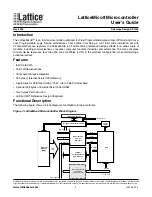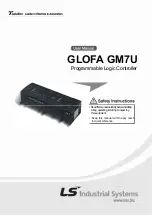
Initialize VIM RAM. Map the ESM low priority interrupt service routine and high priority interrupt
service routine to pre-defined device specific interrupt channel. (Refer to device specific datasheet.)
Force error on
pin to check the functionality of
pin and external monitoring
device connected to
pin (ESMEKR).
ERROR
ERROR
ERROR
Power up or PORRST
Enable the interrupt in VIM and CPU.
Map ESM interrupt to high/low (ESM Group1 only, see register
ESMILSR1,ESMILCR1, ESMILSR4, and ESMILCR4).
Define ESM Low-Time Counter Preload Register ESMLTCPR to determine the
pin
low time in case an error occurs.
ERROR
Enable ESM interrupt and influence on
pin (ESM Group1 only, see register ESMIEPSR1,
ESMIEPCR1, ESMIESR1,ESMIECR1, ESMIEPSR4, ESMIEPCR4, ESMIESR4, and ESMIECR4).
ERROR
Recommended Programming Procedure
415
SPNU503C – March 2018
Copyright © 2018, Texas Instruments Incorporated
Error Signaling Module (ESM)
12.3 Recommended Programming Procedure
During the initialization stage, the application code should follow the recommendations in
to
initialize the ESM.
Figure 12-10. ESM Initialization
Once an error occurs, it can trigger an interrupt, ERROR pin outputs low depending on the ESM settings.
Once the ERROR pin outputs low, a power on reset or a write of 5h to ESMEKR is required to release the
ESM back to normal state. The application can read the error status registers (ESMSR1, ESMSR4,
ESMSR2, and ESMSR3) to debug the error. If an RST is triggered or the error interrupt has been served,
the error flag of Group2 should be read from ESMSSR2 because the error flag in ESMSR2 will be cleared
by RST.
















































